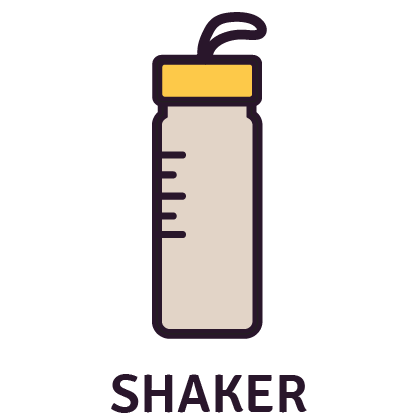The world of Microbiome
The gut microbiome is a collection of trillions of bacterial cells that reside in your large intestine. Recent estimates suggest that we may have as many microbiomes as human body cells, maybe even more. Funny to think we may be even more microbe than human!

The two major groups of microbiomes are “Bacteroidetes” and “Firmicutes”; however, they are not the only residents and are also accompanied by other smaller groups.
The amount and types of bacteria can vary drastically from person to person. While every individual has his or her state of equilibrium, what we eat or drink modifies the microbiome ecosystem for a short time.
Recent studies have shown how gut health is directly linked with the physical and mental wellbeing of a person.
No shit. Literally NO SHIT!

Image: Rights not owned by us. Used for creative purposes.
However, two elements in our diet can improve our gut fauna – probiotics and prebiotics.
Probiotics
They are live microorganisms that offer health benefits to us.
We often find probiotic bacteria in fermented foods like yogurt and kefir, while they are also added to processed foods such as protein bars, smoothies, and dietary supplements.
Before you ask - Yes wine is fermented. No, it is not probiotic.
Not all fermented food are probiotic.

Image: Rights not owned by us. Used for creative purposes.
We can conclusively say we know two strains of bacteria that are probiotic – “Lactobacillus” and “Bifidobacterium” which are commonly found in foods.
These sneaky creatures reside in our large intestine and have the tools to break down the fibrous foods and other compounds that aren’t absorbed in the small intestine.
Prebiotics
Prebiotics simply put are the food for the probiotic bacteria.
(Insert creative – probiotic eating prebiotic with fork and spoon)
Fiber-rich foods like vegetables, fruit, whole grains, and legumes are among the best sources of prebiotics. Additionally, packaged foods may also contain ingredients like inulin, psyllium husk, or oligosaccharides which act as prebiotic.
When the probiotics metabolize the prebiotics – short-chain fatty acids are formed which nourish the cells lining the gut. This helps with relieving constipation and diarrhea and may reduce the risk of colon cancer.
In general, we Indians don’t eat enough fiber-rich foods. The Indian Council of Medical Research (ICMR) recommends that the daily diet of an adult should contain at least 40gms of fiber for a 2000kcal diet.
Are probiotics vegan?
Most processed sources of probiotics such as yogurt or kefir contain lactobacillus bacteria extracted from a dairy source. However, other sources of probiotic bacteria do exist in nature.
So if you’re vegan, we’ve got you back.

Image: Rights not owned by us. Used for creative purposes.
Some fermented sources you could rely on are Sauerkraut, Kimchi, Kombucha, and pickled veggies.
Natural soil-based probiotics are found in the earth and have been used for fermentation for ages. However, these days we get most of our food from the supermarket shelf instead of farms so it is unlikely you get any soil-based probiotics naturally.
Soil-based probiotics are tough bacteria and they don’t even need to be kept in the fridge. This gets some people worried cos they think these bacteria may push the other out. However this is a myth, we need a diverse gut fauna for a truly healthy microbiome system.
We make use of Lactobacillus Subtilis (Grass or Hay Bacillus) in all our smoothies with a strength of 1.2bn CFU. They are inert in are only activated once you mix them with milk/vegan milk.
Health starts in the gut!
We hope you’ve got a good understanding of probiotics and prebiotics.
We learned not all bacteria are bad, and probiotics are essential for the healthy functioning of our body.
Eat fiber-rich foods or consume fiber-rich supplements (prebiotics) to aid in the growth of healthy gut fauna.
- Choosing a selection results in a full page refresh.
- Press the space key then arrow keys to make a selection.










